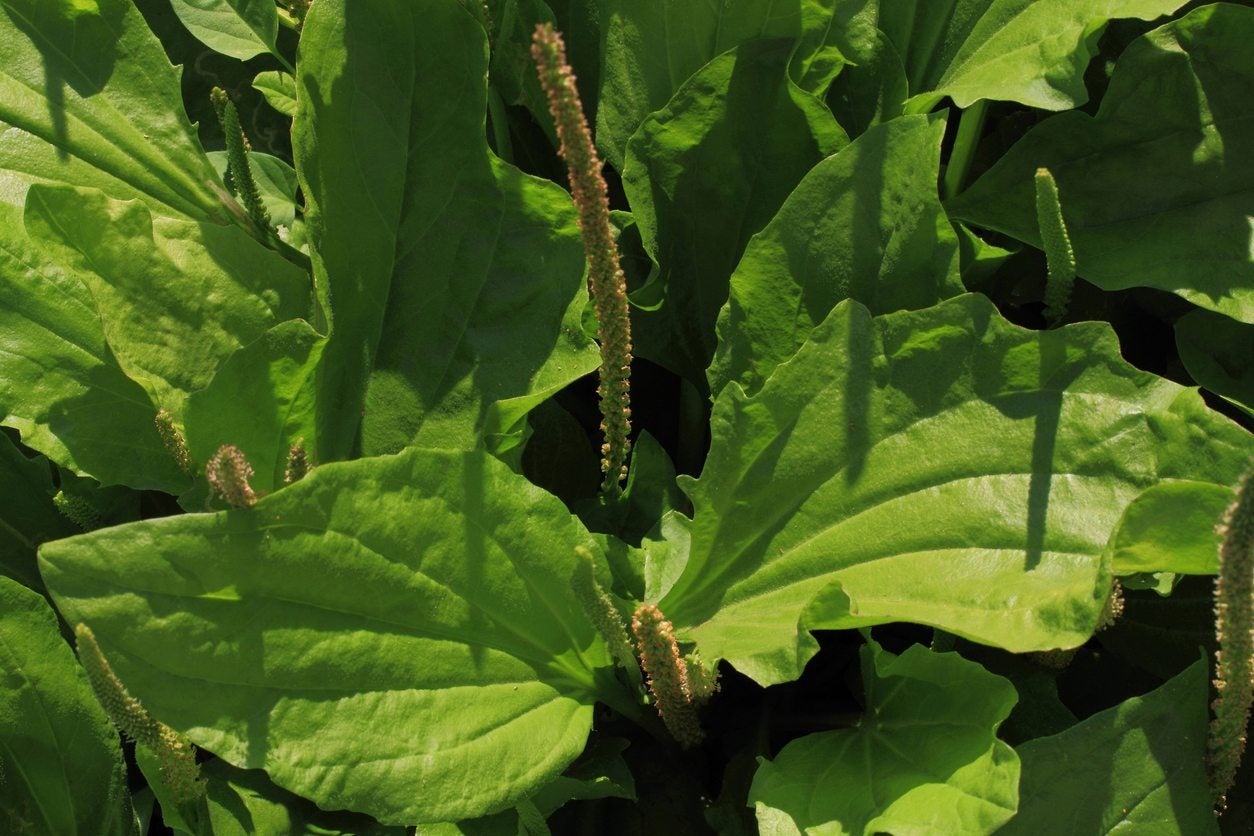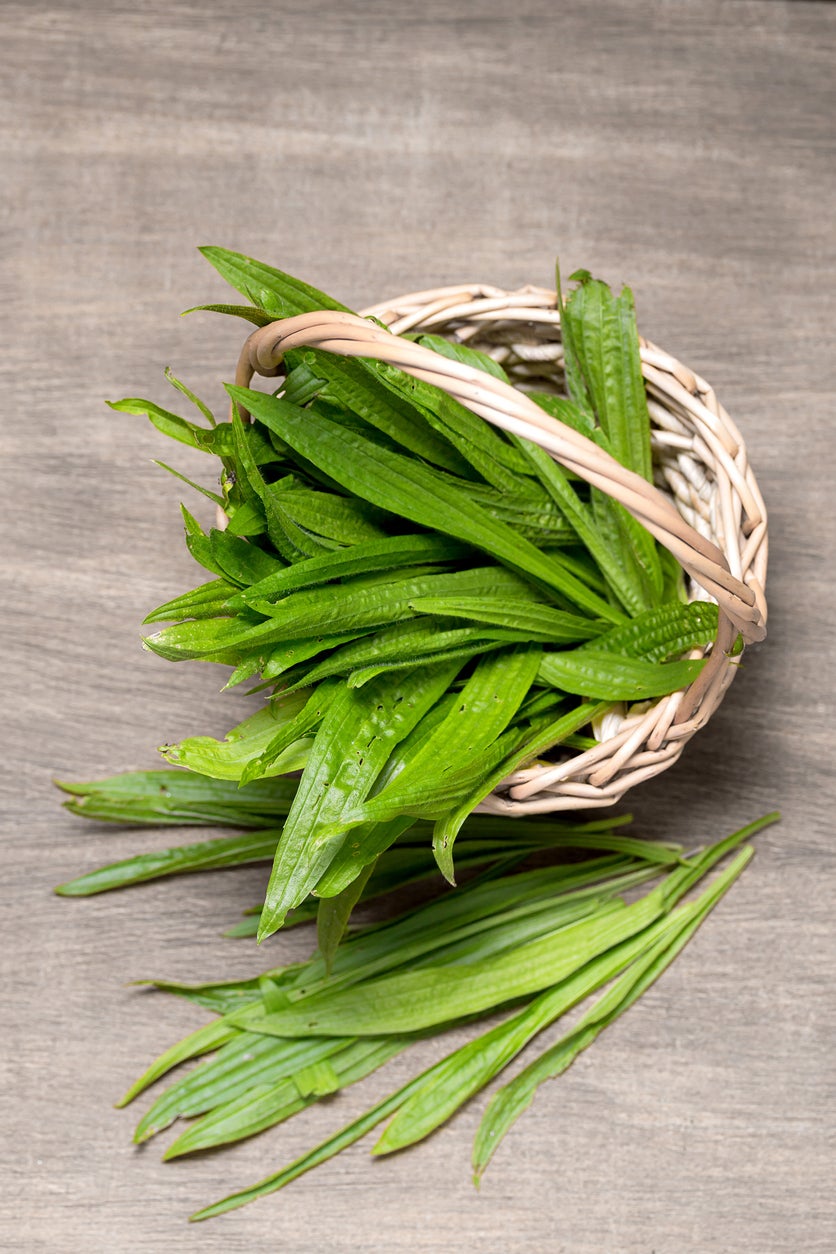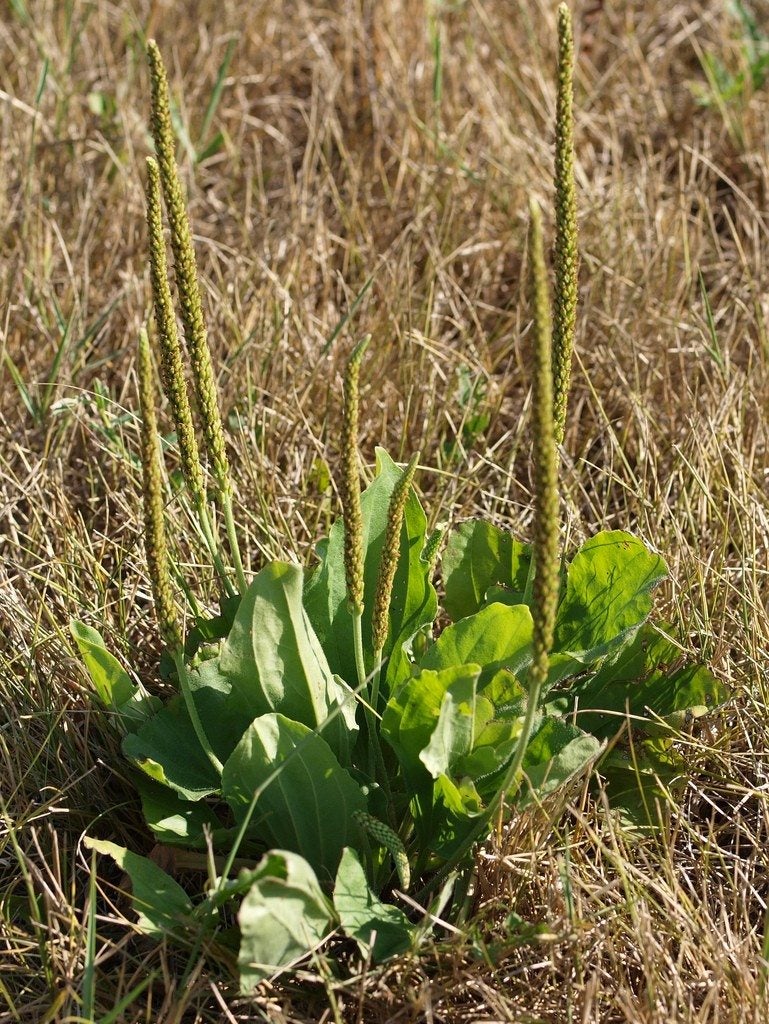What Are Plantain Herb Benefits: Learn About The Cultivation Of Plantain


When it comes to plantain, we often think of banana plantain, also known as cooking plantain (Musa paradisiaca). However, plantain herb (Plantago major) is a completely different plant often used for its many medicinal qualities. Read on to learn about plantain herb benefits and cultivation.
How to Identify Plantain Herbs
Native to Europe, plantain herbs are perennial, adaptable plants that grow nearly anywhere and tend to be weedy. In spite of their benefits, the hardy plants are a source of frustration for many gardeners and, as such, are more often considered weeds. The low-growing, ground-hugging plants display short, thick stems and rosettes of dark, shiny, oval, or egg-shaped leaves measuring about 6 inches (15 cm.) long and 4 inches (10 cm.) wide. A leafless stalk rising above the plant sports spiky clusters of tiny, green flowers in late summer.
Plantain Herb Benefits
Traditionally, plantain herb has been used to treat a variety of conditions ranging from coughs and congestion to nausea, heartburn, constipation, and diarrhea. Some herbalists think the herb may level out cholesterol numbers and help control blood sugar. A poultice of plantain leaves or a spritz of plantain tea contains antibacterial properties that make it an effective treatment for skin irritations, including bites, cuts, scrapes, sunburn, and poison ivy. Although plantain is considered to be safe, the herb should never be used to treat an illness without guidance from a medical provider. The entire plantain plant, including the roots, is edible. The tender leaves can be lightly boiled like spinach or used fresh in salads.
Cultivation of Plantain in Gardens
Plantain herb growing requires very little effort, as the plant grows across the country in USDA plant hardiness zones 3 through 9. Plantain herb grows in full sun or partial shade and nearly any soil, including sandy or rocky soil. Plant seeds directly in the garden in spring or start them indoors a few weeks ahead of time. A week of chilling time in the refrigerator (stratification) helps ensure germination. Harvest plantain any time by snipping the leaves or digging the roots with a spade or garden fork. Always wash the leaves thoroughly and be careful about harvesting plantain growing along roadsides or in unfamiliar ideas, as these plants may be sprayed with herbicides.
Gardening tips, videos, info and more delivered right to your inbox!
Sign up for the Gardening Know How newsletter today and receive a free copy of our e-book "How to Grow Delicious Tomatoes".

A Credentialed Garden Writer, Mary H. Dyer was with Gardening Know How in the very beginning, publishing articles as early as 2007.
-
 Looking For Plants To Give You The Soft And Fuzzies? Try These 5 Fuzzy Leaf Plant Options
Looking For Plants To Give You The Soft And Fuzzies? Try These 5 Fuzzy Leaf Plant OptionsLovers of texture, drama, silver foliage and tactile plants will adore these special sensory garden additions. These fuzzy leaf plant options will leave you all aglow
By Susan Albert
-
 Get Ready For A Summer Of Hummers! Grow These Full Sun Hummingbird Plants and Flowers
Get Ready For A Summer Of Hummers! Grow These Full Sun Hummingbird Plants and FlowersIf you’re lucky enough to enjoy a sunny backyard, make sure you are maxing out on your pollinator opportunities and grow these full sun hummingbird plants and flowers
By Tonya Barnett
-
 Cooking Plantain Weeds – Is Common Plantain Edible
Cooking Plantain Weeds – Is Common Plantain EdiblePlantago is a group of weeds that grow prolifically all over the world. In the U.S., common plantain, or Plantago major, is in nearly everyone’s yard and garden. The weed can be a challenge to control, but it is a weed you may want to consider harvesting. Learn more here.
By Mary Ellen Ellis
-
 Plantain Control - How To Eliminate The Weed Plantain From Your Lawn
Plantain Control - How To Eliminate The Weed Plantain From Your LawnPlantains are unsightly lawn weeds that thrive in compacted soil and neglected lawns. Read this article to learn more about plantain control so you can have the attractive yard you want.
By Jackie Carroll